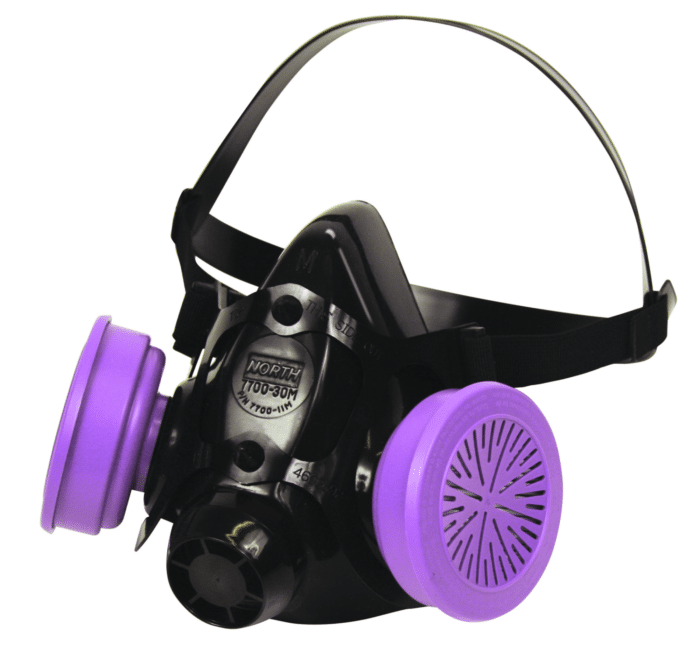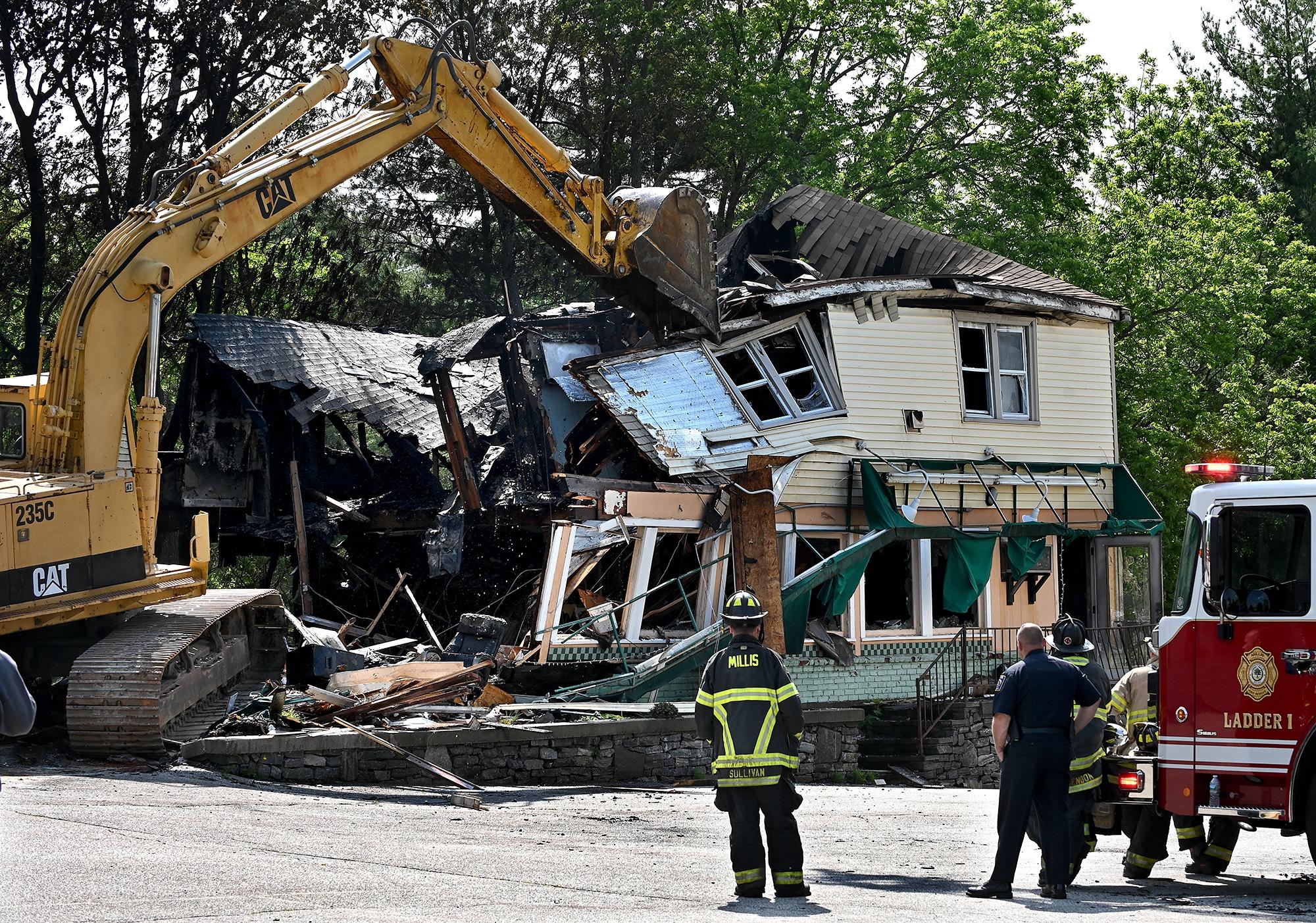Respirator Fit Test Why do I need 1
Table of Contents
ToggleRespirator Fit Test Why do I need 1
Respirator Fit Test Why do I need 1? Because it's with in your own best interest to ensure you can achieve a perfect respirator to face seal. The gravity of the situation of wearing a respirator correctly is so essential that a WorkSafe BC Regulation demands it. Construction work environments, especially renovations on older buildings can can contain deadly substances with in the materials used. Older paints can contain Lead, glued on tiles for flooring can have Asbestos, as well even today Crystalline Silica Dust is one of the most prominent particulants on worksites.
The New Normal
Furthermore, in today's day and age of the New Normal, protection from Covid-19 is essential and life-saving. To emphasize, under WorkSafe BC Regulations, a fit test is required when wearing any type of half or full-face respirator. Most important is making sure you have a fit test even when your wearing a N95 cloth respirator.
Respirator Instructional Safety Orientation
In addition, a Respirator Instructional Safety Orientation as outlined in the CSA Standards Z94.4-02 will be verbally delivered prior to the actual testing procedure. A Respirator Fit Test is a lot more than just ensuring a face seal. The information delivered by the person conducting the test will is critical for the workers to understand. This part of the fit testing process will demonstrate the proper use, care, storage and cleaning of your respirator. A form will be filled out with your information as well as listed sections of information you'll receive as per the health and safety of using a respirator.
Covid-19
Covid-19 has gripped the entire world. If you’re working in an environment where the risk of catching this virus is high, you should be wearing a fit-tested respirator. Covid-19 is .125 microns in size. If the virus was airborne on its own, nothing would protect us as our current N95 and P100 HEPA filters can only capture .3 microns and bigger. However, Covid-19 must attach itself to an aerosol vapor like H2O to become airborne. Water vapor is 70 to 350 microns and is captured by our current filters. Since Feb. 2020 FreeBird Safety has conducted over 1900 Respirator Fit Test for not just construction workers, but medical and dental professionals as well. Certifying their protection from Covid-19.
WorkSafe BC Legal Requirements
Regulation 8.40
Respirator Fit Test Why do I need 1? WorkSafe BC regulation 8.40 (1) states, "A respirator which requires an effective seal with the face for proper functioning must not be issued to a worker unless a fit test demonstrates that the facepiece forms an effective seal with the wearer's face." The test must be documented. As well, all persons passing should be issued a laminated wallet card proving they have passed. Fit tests must be conducted annually. Not complying can lead to stop-work orders, fines, and most important is the negative effects on a workers' health. The cost of this procedure is dramatically less than the cost of NOT having it done.
Regulations 8.32 When is a Respirator Required
Worksafe BC Regulations 8.32 says,
If a worker is or might be exposed in a workplace to an air contaminant that exceeds
(a) an 8-hour TWA limit, ceiling limit, or short-term exposure limit set by ACGIH for the air contaminant,
(b) a limit that is otherwise determined by the Board under section 5.48 for the air contaminant, or
(c) a limit set by section 5.49 for the air contaminant, the employer must provide an appropriate respirator and ensure that the worker uses an appropriate respirator in accordance with section 8.34.
(For example, Crystalline Silica rating is .025 mg in a cubic meter of air over an 8 hour period)
Regulation 8.39 Pre Testing Worker Requirements
Pre Testing Worker Requirements are as follows. A worker must be clean-shaven, yes all workers, no exceptions, 8.39 of the regulations. It must also be stated that religious concerns can not play a part in this circumstance. If for some reason a worker's religion conflicts with the obligations under the regulations, the worker must have a conversation with their employer about alternative duties that can accommodate their religion. In addition, a worker must not have any virus such as a cold or flu during the test. Mucus or phlegm in the lungs might cause issues with testing. The Respirator Fit Testing Services will point out all these items.
Building Materials Contain Deadly Substances
Respirator Fit Test Why do I need 1? Between 1950 and 1990, over 3000 hazardous building materials contained asbestos. Other Hazardous Building Materials, is Lead-based exterior paint. Widely used prior to 1960 up till 1990 and is still on buildings today. With renovations increasing, you will be in harm's way. Rundown houses and older buildings, old pipes, and services underground contain deadly substances, the list goes on. Built in the past, products containing Asbestos, Lead, and Crystalline Silica, as well as other harmful substances could be present. In BC every year dozens of workers die from breathing in hazardous substances from building products. The numbers are overwhelming each year for Day of Mourning.
Test the Materials
Prior to conducting any home renovations or remodeling, have the materials in your home tested for harmful substances. Early construction used a lot of deadly materials in home construction. In fact, if you hire a reputable renovation company, they will not commence remodeling until a full round of testing procedures has been conducted. So, what's being tested and where are these hidden hazards. For more information read the pamphlet at WorkSafe BC Asbestos Hazards When Renovating Older Homes
What contains Asbestos
- Drywall joint compound, wall plaster, and wallboard
- 9-inch tiles or sheet vinyl flooring
- Older window glazing
- Some older roofing and siding materials
- Heating duct Insulation and Vermiculite Insulation
- Older house wire insulation
- Popcorn Textured Ceilings and Ceiling Tiles
- Electrical Insulators and light fixtures
Lead in Construction
Lead is such a deadly substance that it is argued even today that Lead was one of the contributing factors that helped destroy the Roman Empire. In modern times lead can still be found on construction site and general purpose everyday items. Below is a list showing where lead can be found.
- acoustic dampening baffles
- additive in brass and other alloys
- batteries
- cable and wire casing
- cast iron pipes, gaskets, and connections
- solder (plumbing and electrical)
- indoor firing ranges
- decorative pieces
- flashing
- glazing
- lead glass, stained glass
- late 19th and early 20th century tinted mortar for stone cladding
- paint and surface coatings
- radiation shielding (bricks or sheeting)
- structural steel primer
PCBs in your Old House
- Pre 1979 Electrical Devices: (Lighting Ballasts, Capacitors, Motors, Pumps)
- Some Molded Rubber Parts
- Caulking, Sealants, Coatings, Adhesives
- Some gaskets made from Fabric or Felt
Mercury
- Fluorescent Lamps, Tubs, and Bulbs
- Thermostats, Switches, Load Meters, Relays
Molds and Biohazards
- Older homes that contained moisture could develop Mold issues
- Crawl Spaces could contain smaller animals in a state of decomposition and mold
House History
One thing you might want to check for is the past use of spaces on the property. For example, if the prior or original owners used the garage as a home-based business in automotive repair, Hazardous substances can be lurking. Brake pads from older cars and trucks contain a high quantity of Asbestos. This is just one example. So, is your question answered. Respirator Fit Test Why do I need 1. In addition, never just put on any old mask, consult with Respirator Fit Testing Services. A Respirator Fit Testing Services will explain exactly what's required
Crystalline Silica
Furthermore, Crystalline Silica, when reacting to your body can produce a deadly disease called Silicosis. The result from Crystalline Silica and this disease is a death that’s painful, and long. Just one more in the realm of Hazardous Building Materials. Not to mention, in the demolition of old buildings there are other hazards. Certainly, saying no to fit testing your respirator is like committing suicide, and that's no exaggeration.
Cost
Using a smoke generator for a qualitative respirator fit test, a North 7700 half mask, and a set of brand new P100 HEPA filters will only cost you $70 to $90 plus tax. A small price to pay for protecting your life. Yet, other respirators can be high in price. Full Face and Supplied Air Respirators Self Contained Breathing Apparatus (SCBA) can run up to $1000 or more for a respirator. With that being said, the cost is cheaper than breathing in Crystalline Silica.
Respirator Fit Testing Services
If you have any further questions on Hazardous Building Materials, or you're still asking Why do I need a Respirator Fit Test, and wish to discuss other Hazardous Building Materials, feel free to contact us at (604) 226-5933 0r email us at [email protected] . The Respirator Fit Testing Services can provide a life-saving aspect to your career.
This is what you’ll find in “Breathing in Death”



Pingback: Blogging About Construction Safety, Accidents, WCB Act Of BC, Events
Pingback: 10 FAQ On Respirators Masks Fit Testing